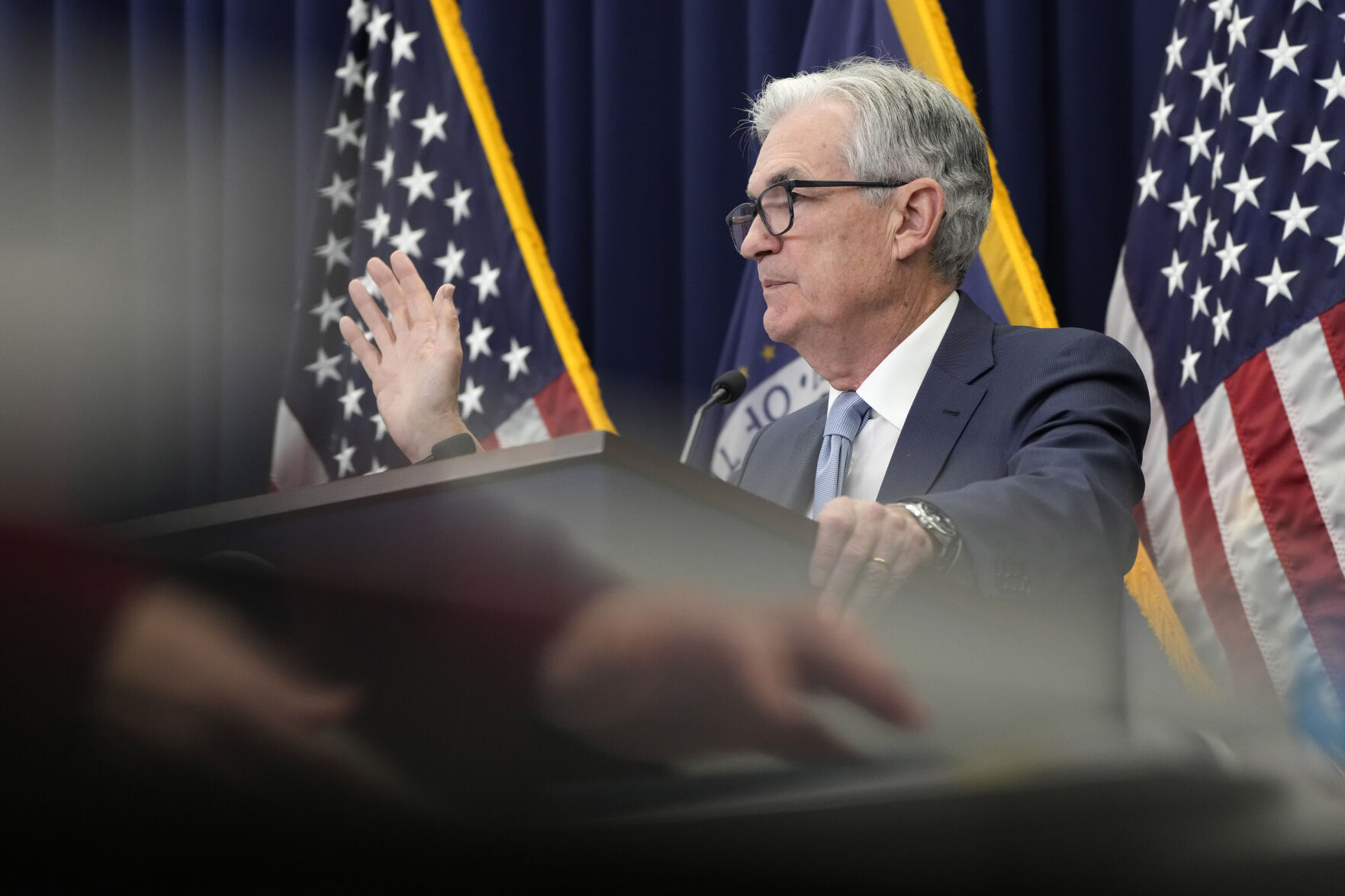WASHINGTON — Inflation is cooling, and parts of the economy appear to be weakening. But Chair Jerome Powell is likely today to underscore that the Federal Reserve’s primary focus remains the need to fight surging prices with still-higher interest rates.
With financial markets anticipating that the Fed will stop raising rates soon and possibly even cut them later this year, analysts say Powell will need to push back against such optimism. If financial markets expect lower rates than what the Fed plans to deliver, the central bank’s already treacherous task can become even harder.
Powell’s tough message will likely emerge at a news conference after the Fed’s 19-member policy committee announces its latest action. The policymakers are set to raise their benchmark rate by a quarter-point to a range of 4.5% to 4.75%, its highest level in about 15 years. The move could further increase borrowing rates for consumers as well as companies, ranging from mortgages to auto and business loans.
In some ways, the Fed’s challenge is trickier than it was last year, when inflation accelerated much faster than officials had expected. After being caught off guard — Powell had initially characterized high inflation as only a temporary phenomenon — officials developed a clear view of what was needed: An aggressive series of rate hikes to slow borrowing and spending, cool growth and curb high inflation.
Now, though, inflation has weakened since the fall. As a result, the risks that the Fed’s rate hikes could send the economy into a painful recession, with waves of job losses, are rising. Consumer prices, by the Fed’s preferred measure, have risen at just a 2.9% annual rate in the past three months. Yet Fed officials have said they would need to see further evidence that inflation was declining closer to its 2% target before they would consider suspending their rate hikes.
The latest sign that inflation is cooling came Tuesday in a report that showed wage growth slowed in the final three months of last year for a third straight quarter. That report could reassure Fed officials that rising paychecks are now less likely to fuel inflation.
Over the past year, with businesses offering healthy raises to try to attract and keep enough workers, Powell has expressed concern that hefty pay growth in the labor-intensive service sector would keep inflation too high. Businesses typically pass their increased labor costs on to their customers by charging higher prices, thereby perpetuating inflation pressures.
Some economists think the Fed doesn’t need to push rates much higher — and that doing so would heighten the risk of a deep recession. Economists at Morgan Stanley suggest that as inflation continues to ease in the coming months, today’s rate hike will end up being the last one this year.
The Fed could signal that a pause in rate hikes is on the horizon by changing some language in the statement it issues after each policy meeting.
Since March, the statement has said that “ongoing increases in the (interest rate) target range will be appropriate.” Some economists expect officials to slightly alter that part of the statement to make it a less specific commitment and give the Fed more flexibility.
Still, Powell isn’t likely to signal that a pause in rate increases will occur anytime soon, out of concern that such a message could touch off rallies in stocks and bonds. Those trends could boost the economy — and inflation — by giving consumers more money to spend and encouraging people and businesses to borrow more. That’s just the opposite of what the Fed wants.
“He’s got to put a hawkish tint to everything he says,” said Vincent Reinhart, chief economist at Dreyfus and Mellon and a former top Fed staffer. (In Fed parlance, “hawks” typically favor higher rates to control inflation, while “doves” often lean toward lower rates to support employment.)
“Everybody is basically saying, ‘Hey, Chair Powell, let’s do your victory lap,’ ”Reinhart said. “And he’s like, ‘We’re only where we are because of our vigilance, and we can’t let it down now.’ ”
Financial markets have strengthened in anticipation of lower rates ahead. In December, Fed officials had forecast that they would raise their key rate above 5%. Investors, though, expect them to stop at a range of 4.75% to 5% and to end up cutting rates before the year is out. That’s true even though Powell has gone out of his way to stress that the Fed doesn’t expect to cut rates this year.
The divide between the Fed and financial markets is important because rate hikes need to work through markets to affect the economy. The Fed directly controls its key short-term rate. But it has only indirect control over the borrowing rates that people and businesses actually pay — for mortgages, corporate bonds, auto loans and many others.
The consequences can be seen in housing. The average fixed rate on a 30-year mortgage soared after the Fed first began hiking rates. Eventually, it topped 7%, more than twice where it had stood before the hiking began.
Yet since the fall, the average mortgage rate has eased to 6.13%, the lowest level since September. And while home sales fell further in December, a measure of signed contracts to buy homes actually rose. That suggested that lower rates might be luring some home buyers back to the market.
Broader measures of so-called “financial conditions,” which include things like corporate borrowing costs, also show looser credit.


